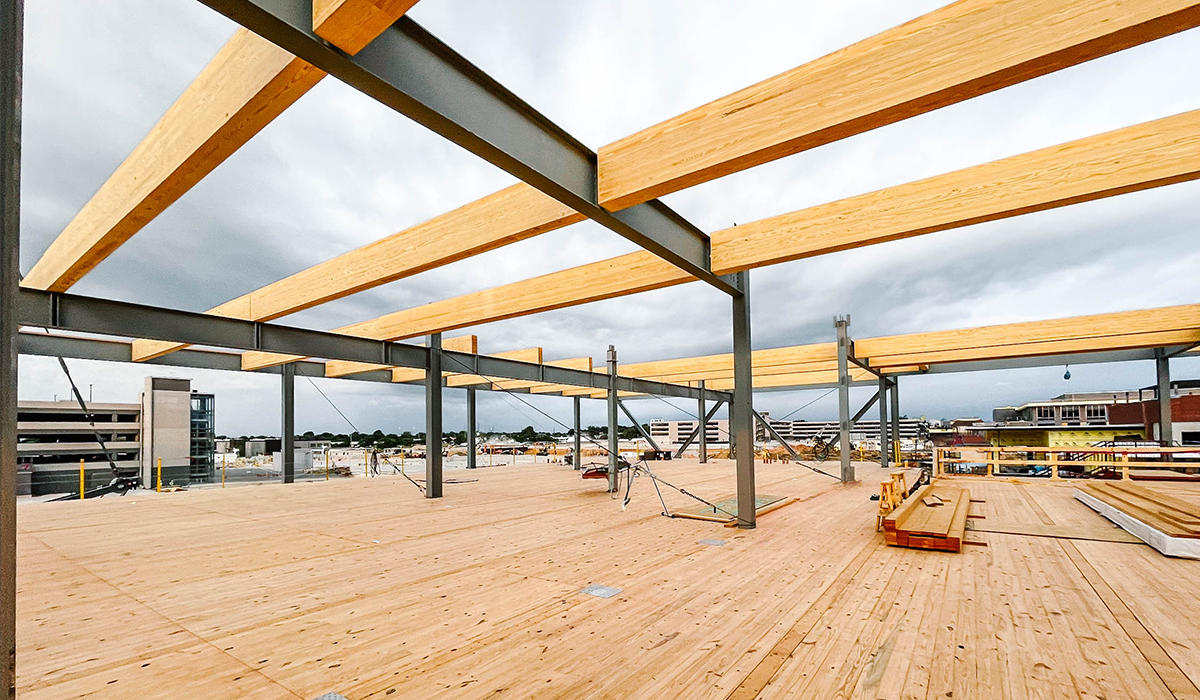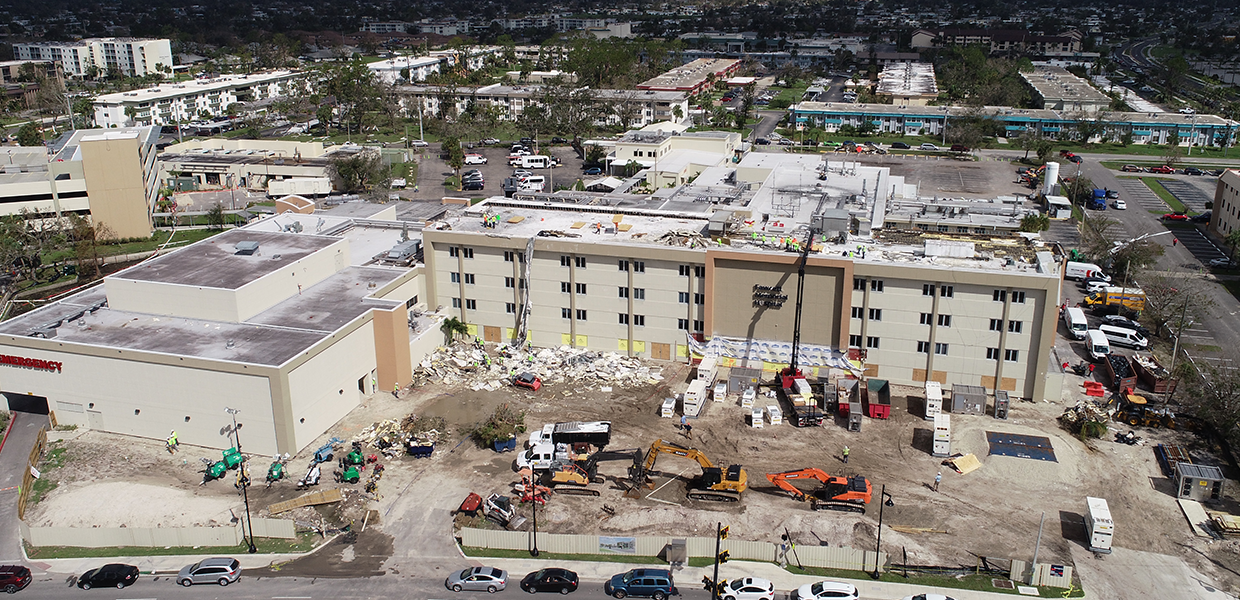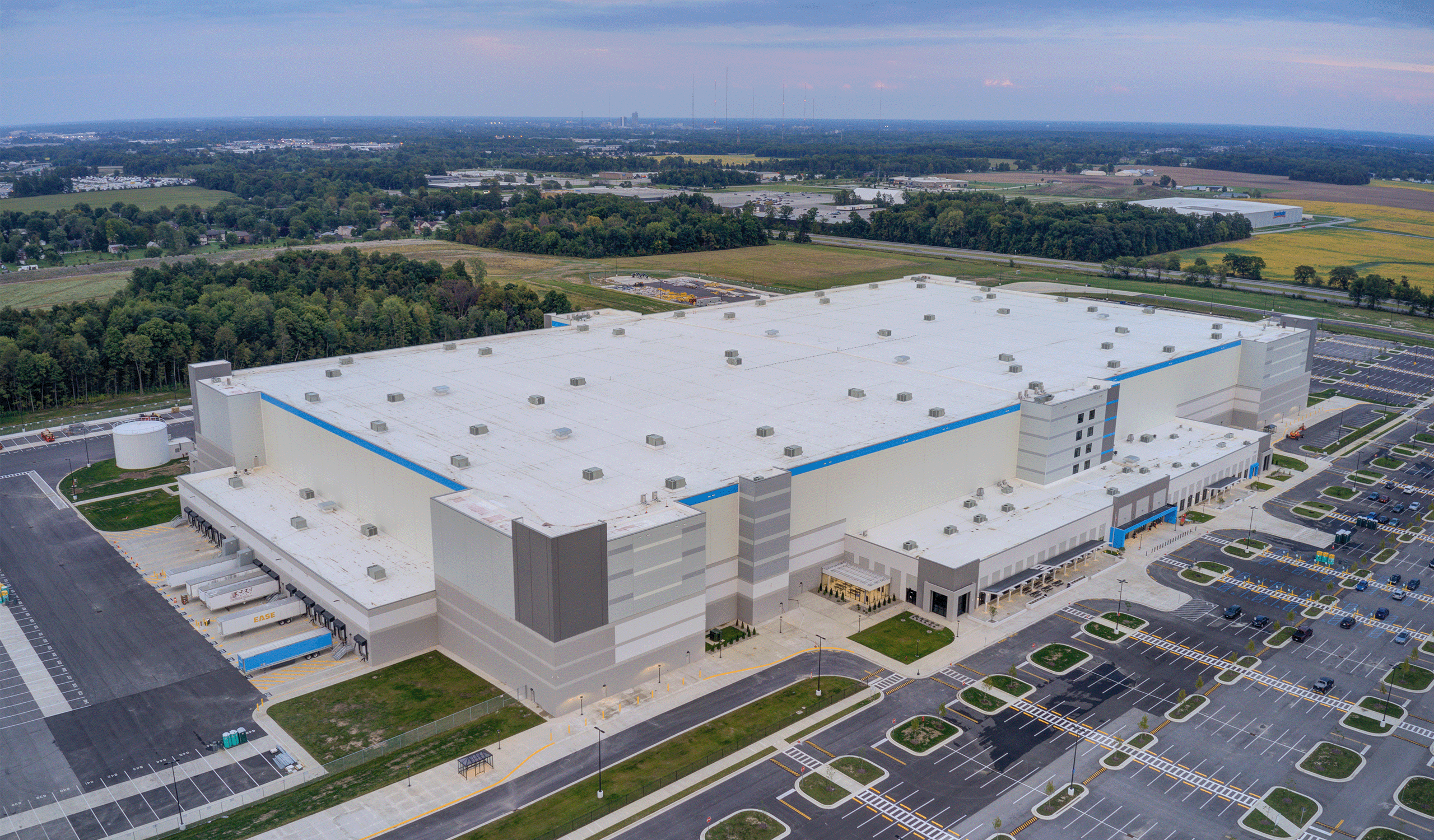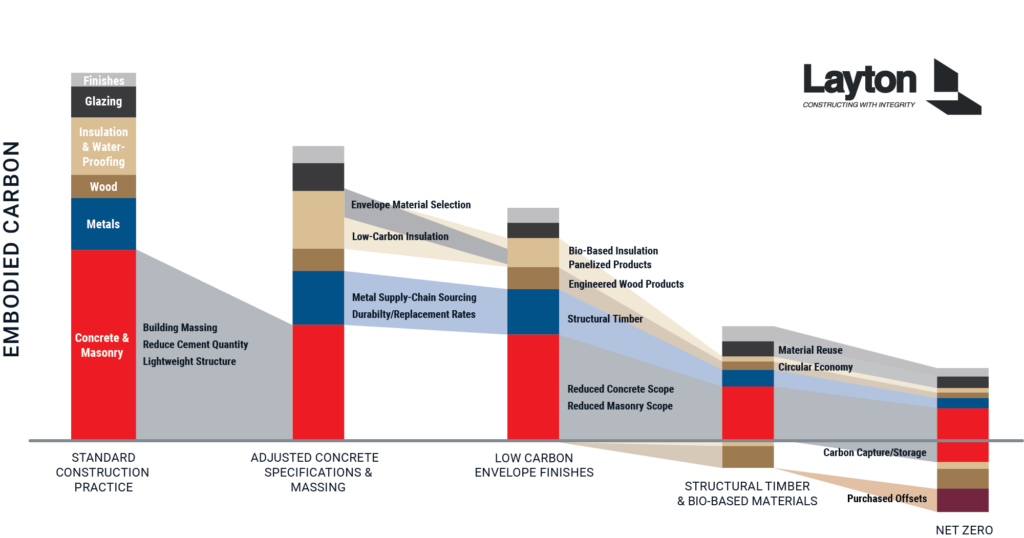When it comes to building green, Layton is all in. Amid the challenges surrounding development in general, our clients continue to push for innovation in sustainable construction, and we continue to invest in technology and training to keep our staff up on the latest in sustainable building practices.
Reducing embodied carbon is becoming more of a priority for developers, as research continues to reveal how feasible it is to reduce a structure’s carbon footprint. This has become a priority in the industrial sector specifically, where major strides are being made to use low-carbon materials.
Why the industrial space? One word: concrete.
Back in 2021, while completing construction on a 2.9 million square-foot robotic fulfillment center in Fort Wayne, IN, curiosity got the best of us: what was the carbon footprint of this structure going to be? We learned then what is fully understood in the construction industry now: concrete is the greatest contributor to the carbon emissions of a traditionally designed project. And save for structural steel, concrete was the majority shareholder where scope was concerned on this massive facility.
This Net-Zero graph shows the embodied carbon footprint of various scope on a construction project. Concrete (in red) has the highest footprint but also represents the material with the most potential for innovation.
The Idea: Piloting the use of CarbonCure Technologies.
What began as an endeavor to simply benchmark the embodied carbon, quickly turned into an opportunity to reduce the overall carbon footprint of the entire building, and this forward-thinking tenant wanted to try something new.
Enter: CarbonCure Technologies.
CarbonCure injects a precise dosage of captured carbon dioxide into concrete during mixing, where it is mineralized. This improves the concrete’s compressive strength, enabling mix optimization, significant carbon footprint reductions, and cost savings—all benefits any project owner would be thrilled to take advantage of.
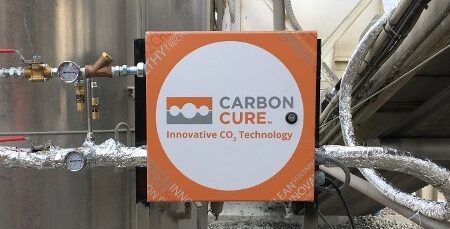
CarbonCure Technologies introduces recycled CO2 into concrete.
Mitigating risks: Layton’s bread and butter.
There are always risks associated with testing out new products, especially on a large scale project. Concrete has been around since Roman times, after all. We have thousands of years of data on its proper use and longevity. With CarbonCure, the data simply didn’t exist yet. Layton was selected by the tenant due in large part to our flexibility and history of exploring new endeavors with them, and we understood their mission. As part of their global initiative to reduce the carbon footprint of their buildings, they needed a partner to test out this new product to determine its feasibility for use on their entire portfolio, and thus set a precedent for future projects. We had our work cut out for us.
Through collaboration with our visualization team, we first examined the project’s Revit model to get an understanding of the life cycle of the project and see where we could make the greatest possible impacts.
Next, we examined the concrete mix design. By working with our national network of concrete suppliers, we submitted an alternate mix design for portions of the structure and foundations to the owner and architect. Our goal was to maintain the desired performance and aesthetic of the concrete while also reducing embodied carbon. The mix design passed our examinations and was approved by the design team. We proceeded forward.
The Implementation: Would CarbonCure’s concrete technology lower the carbon emissions and meet performance criteria?
Working with our concrete consultants and contractors, the Layton team first used CarbonCure in all the footings and foundations, which amounted to 15,500 cubic yards of concrete. We performed extensive testing and field observations to ensure the overall performance criteria were met. Each pour exceeded the established criteria and we were thrilled. We then moved forward in analyzing CarbonCure’s performance for slab-on-grade (SOG) and slab-on-deck (SOD). Two test concrete pours commenced: one 21,600 SF (528 cubic yards) SOG and one 30,200 SF (604 cubic yards) SOD. The result? We found no differences when it came to workability and installation of the concrete with CarbonCure versus the standard mix design. We continued to perform testing and field observations (and reported accordingly) to ensure the overall performance criteria were met.
Game. Set. Match.
By using CarbonCure, Layton’s project team not only reduced the embodied carbon of the project, but set the standard for more green building practices on large scale projects for the future. And of course, none of this would have been possible without a forward-thinking tenant who continues to jump at the chance to engage a new technology to make their projects more eco-friendly.
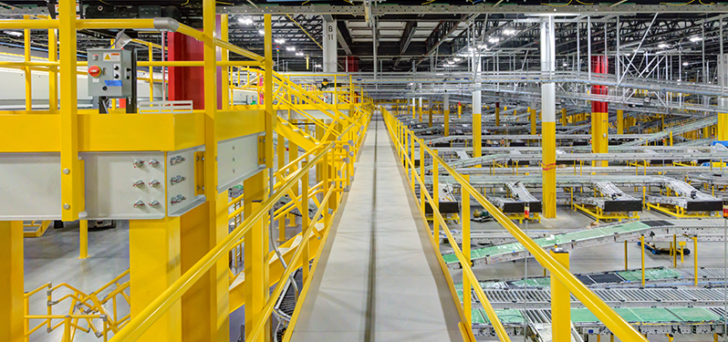
To lower the carbon footprint of this 2.9M square-foot automated robotic fulfillment center, Layton deployed CarbonCure’s sustainable concrete solution.
Going the extra mile to go green.
Layton doesn’t just build buildings, we provide a construction service, one where we take our clients’ visions and show them what’s possible. As construction experts, it’s our job to bring ideas to the table, give our clients options, and build a more sustainable world together.
Considering the size of the robotic center and the greenfield site (147-acres) it would sit on, we knew the potential for waste was high. Prior to construction, our team reached out to several local waste companies to find one that was able to recycle the materials that would inevitably be thrown away. With luck, we were able to find a local company that sorted through all the waste on a monthly basis, and took the recyclable materials—wood, metal, and plastic—to their appropriate facilities. In this instance, a little foresight yielded big results.
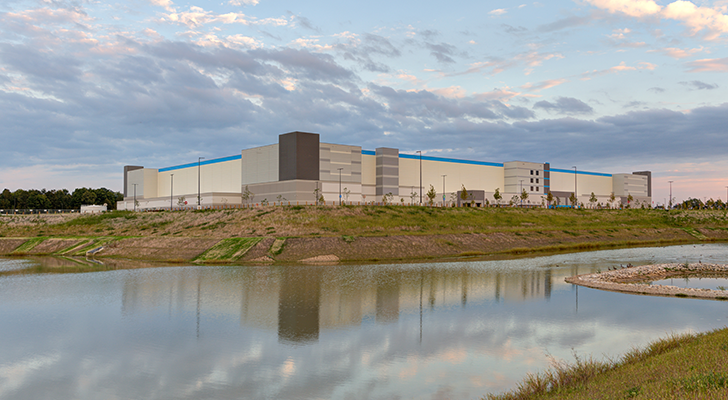
We are committed to being wise stewards of our environment by continually seeking ways to reduce our impact and build sustainable facilities. Read more about this project and other fulfillment centers Layton has completed in our portfolio.
Have questions about our sustainable practices?
Contact Jenn Taranto, Vice President of Sustainability
jennifer.taranto@stobuildinggroup.com | (617) 593-8750
